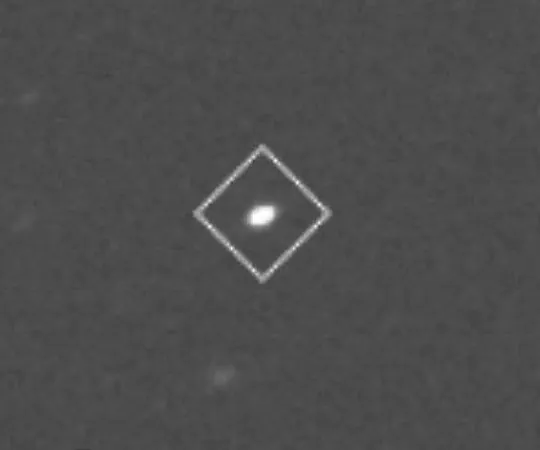
Lucy Probe Set for Astounding Encounter with Asteroid Donaldjohanson!
2025-04-16
Author: Michael
Historic Flyby on the Horizon!
Get ready! NASA's Lucy spacecraft is poised for a groundbreaking flyby of asteroid (52246) Donaldjohanson on April 20, 2025. This intriguing three-mile-wide object, located in the main asteroid belt, is a crucial stop on Lucy's journey to uncover the secrets of the solar system.
A Rehearsal for Discovery!
Led by the Southwest Research Institute (SwRI), this approach to Donaldjohanson will act as a thrilling dress rehearsal for Lucy's primary mission—investigating the enigmatic Trojan asteroids that share Jupiter's orbital path. These ancient celestial bodies have remained untouched for billions of years and harbor invaluable insights into the formation of our solar system.
Excitement Builds Among Scientists!
Dr. Hal Levison, the principal investigator of the Lucy mission, expressed his anticipation: "We can hardly wait to explore these cosmic fossils! Our past flyby of Dinkinesh unveiled an intriguing binary satellite, and early observations hint that Donaldjohanson is equally fascinating with its elongated shape."
What Makes Donaldjohanson Unique?
Scientists speculate that Donaldjohanson is a fragment from a larger asteroid, dating back about 150 million years. Its intriguing shape, surface features, and cratering history may reveal secrets about the evolutionary processes it has undergone. Dr. Simone Marchi, Lucy's deputy principal investigator, notes, "Understanding its formation could shed light on its peculiar characteristics."
A Clue to Our Cosmic Origins!
This asteroid belongs to a category rich in silicate materials, with potential mixtures of clays and organic compounds. It's likely part of the Erigone family, formed from a parent asteroid that shattered in the inner main belt. Fascinatingly, this region is believed to be the starting point for near-Earth asteroids like Bennu and Ryugu, which have already been explored by NASA's OSIRIS-REx and JAXA's Hayabusa2 missions.
Bridging the Past and Present!
The upcoming flyby may reveal unexpected links between Donaldjohanson and these past missions. Named after paleoanthropologist Donald Johanson, who discovered the famous fossil Lucy in 1974, this asteroid holds a unique status as the only named asteroid still seen while its namesake is alive. Just as the fossil enlightened our understanding of human origins, the Lucy mission aims to illuminate the beginnings of our planetary system.
Precision Mapping of Cosmic Fossils!
Levison highlights the importance of the flyby: "These encounters not only provide a firsthand look at these celestial bodies but also allow us to thoroughly test Lucy's systems before delving into the Trojan study. With its advanced instruments, Lucy promises to bring new precision in mapping these remnants of planet formation. Together, they're crucial for unraveling the history of our solar system and, ultimately, our world."









 Brasil (PT)
Brasil (PT)
 Canada (EN)
Canada (EN)
 Chile (ES)
Chile (ES)
 Česko (CS)
Česko (CS)
 대한민국 (KO)
대한민국 (KO)
 España (ES)
España (ES)
 France (FR)
France (FR)
 Hong Kong (EN)
Hong Kong (EN)
 Italia (IT)
Italia (IT)
 日本 (JA)
日本 (JA)
 Magyarország (HU)
Magyarország (HU)
 Norge (NO)
Norge (NO)
 Polska (PL)
Polska (PL)
 Schweiz (DE)
Schweiz (DE)
 Singapore (EN)
Singapore (EN)
 Sverige (SV)
Sverige (SV)
 Suomi (FI)
Suomi (FI)
 Türkiye (TR)
Türkiye (TR)
 الإمارات العربية المتحدة (AR)
الإمارات العربية المتحدة (AR)